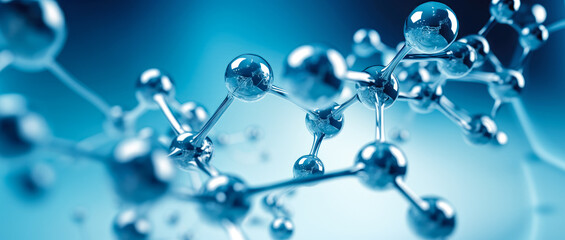Nanotechnology, often hailed as the science of the future, encompasses the manipulation of matter at the atomic and molecular scale to create new materials, devices, and systems with unique properties and functions. In this article, we’ll delve into the fundamentals of nanotechnology, explore its wide-ranging applications, and examine the challenges and opportunities it presents.
1. Introduction to Nanotechnology
Definition and Overview
Nanotechnology refers to the manipulation of matter at the nanoscale, typically ranging from 1 to 100 nanometers. At this scale, materials exhibit novel properties and behaviors that differ from their bulk counterparts, opening up a world of possibilities for innovation and advancement.
Historical Background
The concept of nanotechnology traces its roots back to a lecture by physicist Richard Feynman in 1959, in which he envisioned the possibility of manipulating individual atoms and molecules. Since then, advancements in microscopy and manufacturing techniques have brought this vision closer to reality.
2. Fundamental Concepts
Nanoscale Materials
At the nanoscale, materials exhibit unique properties such as enhanced strength, conductivity, and reactivity. These properties arise due to quantum effects and surface phenomena, making nanomaterials highly versatile and desirable for various applications.
Manipulating Atoms and Molecules
Nanotechnology relies on precise control over individual atoms and molecules to create new structures and devices. Two primary approaches, bottom-up and top-down, are employed to assemble and manipulate nanoscale components, each offering distinct advantages and challenges.
3. Applications of Nanotechnology
Healthcare
In the field of healthcare, nanotechnology holds immense promise for revolutionizing diagnosis, treatment, and prevention. Drug delivery systems utilizing nanoparticles allow for targeted delivery of medications, reducing side effects and improving efficacy. Additionally, nanomaterials are being explored for their potential in cancer treatment, enabling precise targeting of tumors while minimizing damage to healthy tissue.
Electronics
Nanotechnology has transformed the electronics industry, leading to the development of smaller, faster, and more efficient devices. Nanoelectronics, based on nanoscale components such as carbon nanotubes and quantum dots, offer unparalleled performance and energy efficiency. Furthermore, advances in nanotechnology have enabled the creation of flexible displays and other innovative electronic devices.
Environment
In addressing environmental challenges, nanotechnology offers solutions for water purification and pollution remediation. Nanomaterials such as graphene and titanium dioxide exhibit remarkable properties for removing contaminants from water sources and capturing pollutants from the air, thereby mitigating environmental damage and improving public health.
4. Challenges and Future Outlook
Safety Concerns
Despite its immense potential, nanotechnology raises safety concerns regarding its impact on the environment and human health. Nanomaterials may pose risks such as environmental contamination and toxicity, necessitating thorough risk assessment and regulation to ensure responsible development and deployment.
Ethical Considerations
In addition to safety concerns, nanotechnology raises ethical considerations regarding privacy, equity, and access. As nanotechnology becomes increasingly integrated into society, questions arise regarding data security, equitable distribution of benefits, and the potential for widening socioeconomic disparities.
Conclusion
In summary, nanotechnology represents a paradigm shift in scientific innovation, offering unprecedented opportunities for addressing pressing challenges in healthcare, electronics, and the environment. By harnessing the unique properties of nanomaterials, researchers and engineers are poised to usher in a new era of technological advancement and societal impact.

FAQs (Frequently Asked Questions)
- What are some examples of nanotechnology in everyday life? Nanotechnology is present in a wide range of products, including sunscreen, stain-resistant fabrics, and electronics.
- How does nanotechnology impact the environment? While nanotechnology offers potential solutions for environmental challenges, it also raises concerns about the environmental impact of nanomaterials and their long-term effects.
- Is nanotechnology safe for human health? Research into the safety of nanomaterials is ongoing, with concerns about potential toxicity and exposure routes. Proper safety measures and regulation are essential for responsible development and use.
- What are the future prospects for nanotechnology? The future of nanotechnology holds promise for continued innovation and advancement across various fields, with potential applications in areas such as renewable energy, advanced materials, and personalized medicine.
- How can individuals learn more about nanotechnology? There are numerous resources available for learning about nanotechnology, including books, online courses, and research publications. Universities and research institutions also offer programs and workshops on nanotechnology-related topics.





